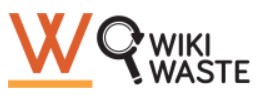Article Originally written and published in MRW Magazine (online)
19 FEBRUARY, 2024 BY MARK SMULIAN
Original Article: New sampling regime could double MRF reporting costs | MRW
Changes to regulations on sampling requirements at MRFs will see a doubling of costs for this process, a report on the sector has warned.
Amendments to the Environmental Permitting (England and Wales) Regulations 2016 are due to take effect in October. Consultancy Monksleigh said in its report Material Recovery Facilities (Qualifying Materials): Market Overview that more MRFs would be included under the regime, including those that receive single waste streams or waste separated at collection.
The report found the biggest impact would be the increase in sampling frequency, at every 75 tonnes of material rather than 125 tonnes currently. Monksleigh said MRFs will also be required to measure and report on 10 types of incoming material instead of four.
It said: “MRFs will need to keep accurate records of the total number and weight of the samples in the reporting period and state whether the material is target, non-target or non-recyclable.
“In our opinion, apart from the practical ramifications of delivering these changes, the likely impact is more than a doubling of cost associated with sampling and reporting.”
Turning to Government policy on the introduction of extended producer responsibility (EPR) for packaging, the report said it appeared EPR payments to local authorities would be based on the type of collection system implemented.
“If the levels of payment are heavily skewed to a particular collection system, then it could influence the approach taken,” the report said.
“On the other hand, the cost of changing systems, bins and associated arrangements (MRFs, bulking, offtakes) are such that many authorities will possibly not change their systems dramatically, just adding the materials under the consistency of materials required.”
Monksleigh said consistent collections for the ‘simpler recycling’ system meant that dry recyclables collection systems were likely to change as local authority contracts come up for renewal.
Defra has said commingled collections can be justified. Full commingling is expected to continue in some metropolitan areas, such as those with a high proportion of flats. There is also expected to be an increase in twin-stream collections, primarily to collect either glass or card separately.
Monksleigh concluded: “Therefore MRFs with the ability to handle both fully commingled and twin-streamed solutions will remain competitive and relevant to the widest cross-section of the market, but the throughput and storage aspects of the MRF design may be impacted over time with these changing flows.”
The report found there were 107 MRFs in Great Britain, of which 81 were in England and 13 each in Scotland and Wales, processing a total of 4,076,618 tonnes of material, a drop of some 200,000 tonnes between 2021 and 2022, equivalent to 5%.
Biffa at 18% had the largest market share by number of sites, including sites acquired from Viridor in September 2021, followed by Suez at 10% and Veolia at 9%. Single-site operators made up the other category of 39%. Biffa was also largest by tonnage at 712,000 tonnes, giving it a 17% market share, with Veolia at 14% and Suez at 8%.
Original Article: New sampling regime could double MRF reporting costs | MRW

